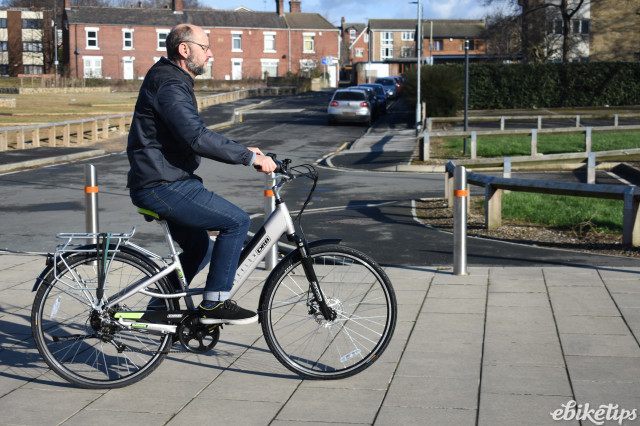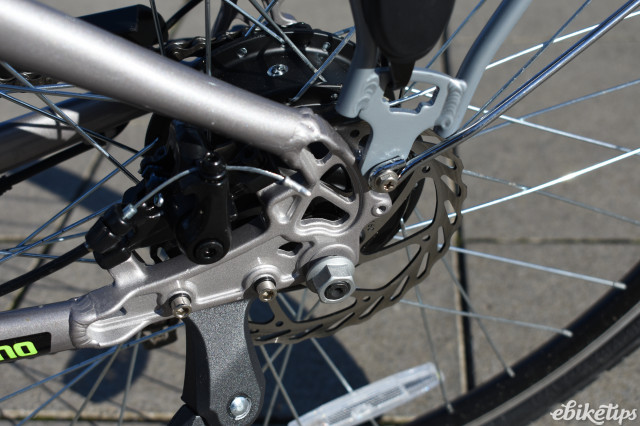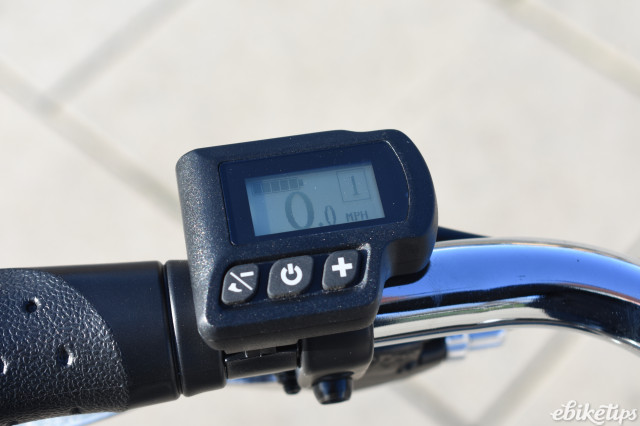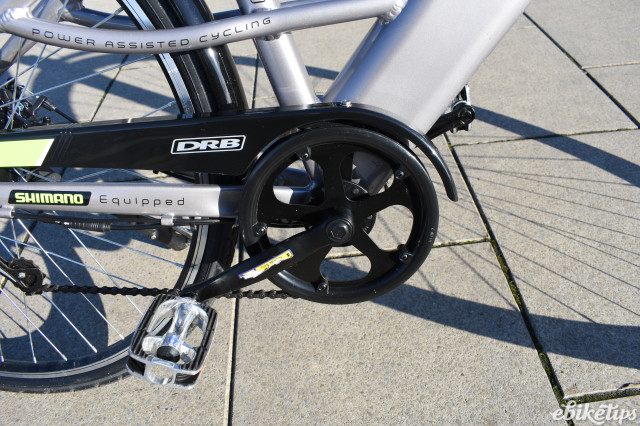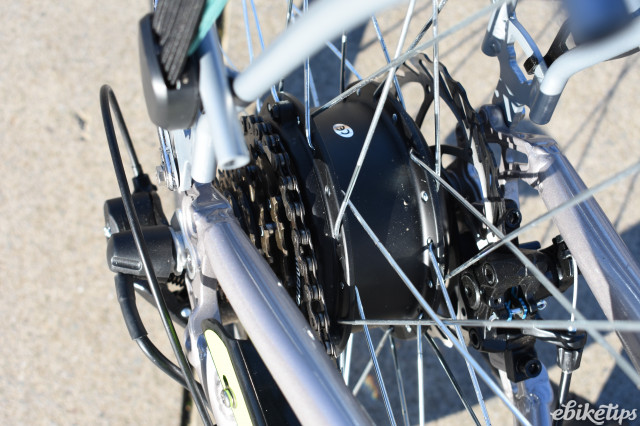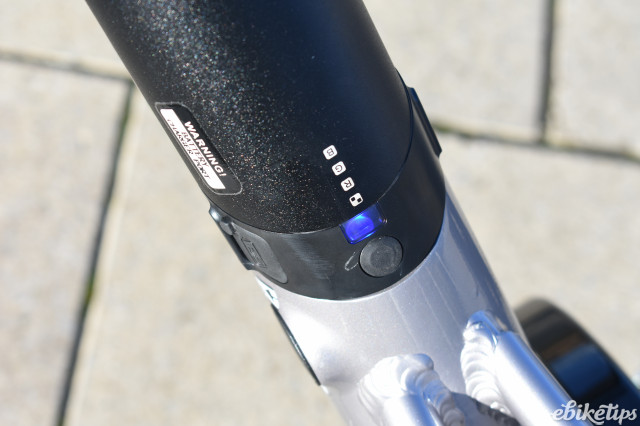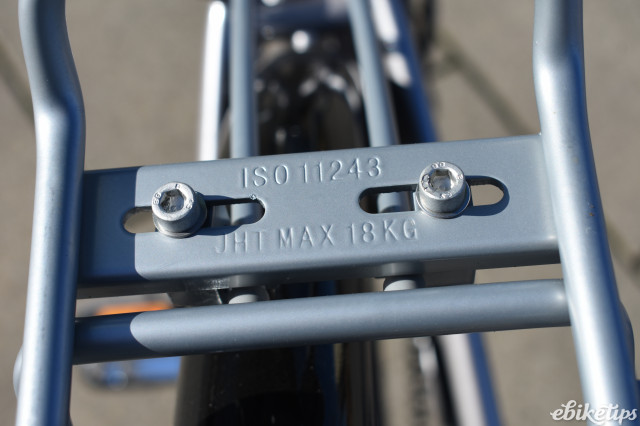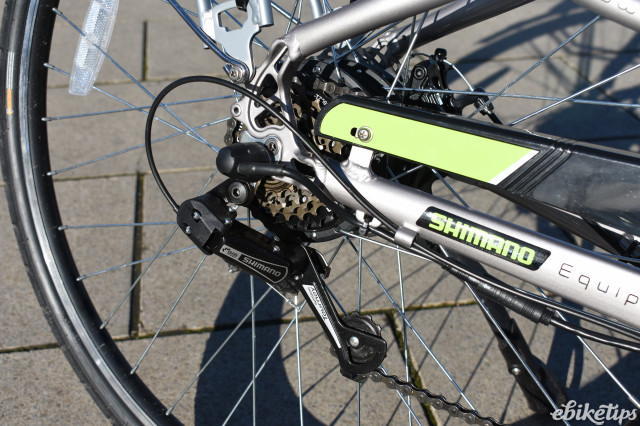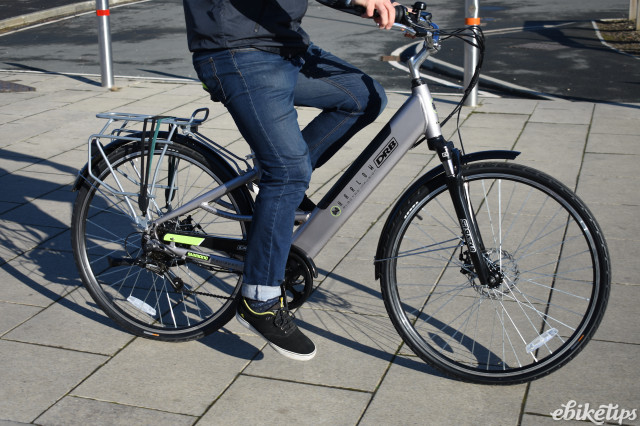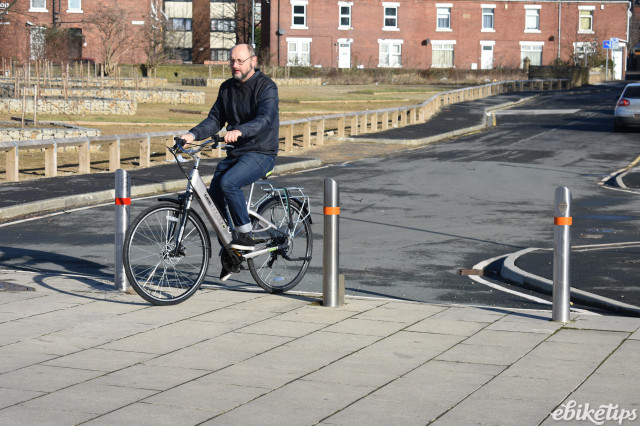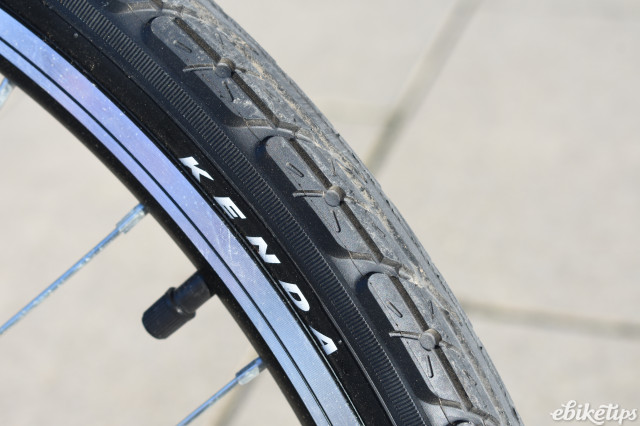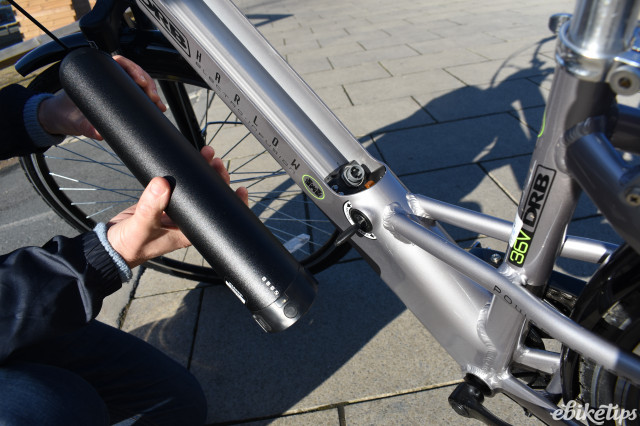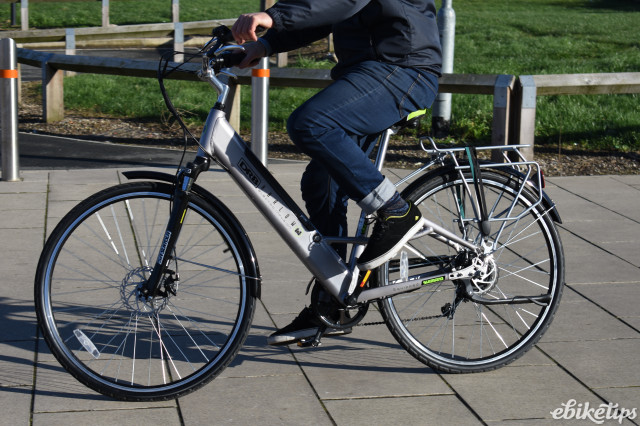Review: Dallingridge Harlow
Overview
- Great value
- Sensitive cadence sensor
- Good size battery
- Heavy
- Power levels 1 and 2 not very useful
If you are familiar with the South-East, you might know Dallingridge as being the name of a 14th Century knight who built Bodiam Castle in East Sussex. The company's HQ looks out to the castle, hence the brand name.
MTF Enterprise are in fact the company behind Dallingridge. They've been in the e-bike biz for 17 years and have just released a range of four own-brand budget e-bikes comprising a folder, a trail style e-MTB, a crossbar hybrid and the step-thru model tested here - the Harlow. All four bikes are aimed at the budget market with a £999 - £1,249 price range and, as you would expect, use Far Eastern geared rear hub motors and cadence sensing only (no throttles), rather than the pricier and more refined torque sensing power systems. The Dallingridge range are distributed by Evolving Sports who are working with dealers across the country.
Harlow spec
The Harlow has almost everything you would expect in a highly functional city or commuting e-bike; mudguards, kickstand, pannier rack and chainguard. Only hardwired lights are missing from the full package.
There's a strong looking aluminium alloy frame with a very easy-to-use low step-over height that comes in a single 16" size. Although on paper that suits smaller riders, there are several inches' adjustment in both seat and handlebar height (thanks to the old-school quill stem). Still, very tall riders might find the cockpit area and seat height adjustment slightly cramped.
A rear hub motor is complemented by a decently-sized 475Wh frame-integrated battery that key locks very firmly in place in the frame and keeps the weight nice and central and reasonably low down. Many budget hybrids and city e-bikes put the battery above the rear rack, which is not ideal for handling. The Harlow's battery location and the quality with which it's integrated into the frame looks spot on.
The budget components are what you might expect, as the money here has clearly gone on the good-sized battery and a nicely designed frame. There are unbranded cable-operated disc brakes, six Shimano Tourney derailleur gears with twist grip, 63mm travel Suntour forks and Kenda 700c semi-slick tyres with puncture protection.
Given the sleek looking alloy frame you might think the 25.68kg weight a little heavy, but the bike features steel handlebars, solid steel front axle (rather than a quick release spindle) and even sturdy steel mudguards and mudguard stays - all of which will add few hundred grams over lighter options.
The ride
I was relieved to find that the power kicks in very quickly - no doubt partly due to the 12-magnet cadence sensor (the more magnets to sense movement, the smoother the power delivery - and 12 is towards the upper end of the normal range). A poor cadence sensing system can feel jerky and very disconcerting for the rider but the Harlow certainly has one of the better ones I've tried, especially given its budget price.
Great value for money city e-bike offering all-round performance
There are three power levels, with level 1 limiting you to low speed, level 2 to around 14mph and level 3 giving assistance to around 17mph. (Although the legal assist limit is 15.5mph, a 10% margin for error is often cited, and that extra bit of speed is a welcome bonus). It also feels nice and easy to maintain speed beyond the assistance cut-out limit.
The display's battery meter is of the rather inaccurate 'battery blocks' type but it's certainly not as 'bouncy' as some I've tried and you have a nice confirmation of the approximate power level on the battery's push button function. The handlebar display has a very useful little power consumption meter which tells you approximately how much power the motor is consuming and can aid an economic riding style if you keep a careful eye on it.
I really enjoyed riding it around a 21-mile rather hilly rural test course (with around 1,115 feet of climbing). Despite a strong headwind and some 10% gradients along the way, I was never over-exerted climbing the hills, though occasionally out of the saddle and pedalling reasonably hard. Suggested range over this type of challenging terrain was around 30 miles for my 68kg frame, so 40 miles seems attainable under more all-round benign conditions.
Our mile-long test climb confirmed the bike carries speed very well up a moderate but continuous hill and it even managed to conquer our 25% mini-climb, even if it was towards the bottom of the league table (some do fail to make it). This all suggests the hub motor is geared more for speed than outright torque. Lower bike gearing might have helped, and it doesn’t look too tricky a job to change the one-piece chainwheel and crank if you live somewhere really hilly. (Although in that scenario, a mid-drive might be a much more advisable choice if you can afford the step-up in price).
Why don't more e-bikes feature twist grip derailleur gears? They are so easy to use as you can quickly click through a few gears. This is ideal for e-bikes where you will be accelerating quickly, so full marks on the spec here. The cable operated disc brakes felt a little spongy, especially the rear, but performed the job well enough and more wear on the pads in time might help give them a bit more bite. There is no adjustment on the suspension and I found it a bit rigid, though it did take the edge off bigger potholes and the like - heavier riders may appreciate it more than I did.
In fact I found the super comfy saddle of greater effect for evening out humps and bumps. The comfortable upright riding position promoted by the swept back bars meant my bodyweight just sunk into the luxurious padding, but there was enough support there too to ensure I didn't 'bottom out'.
I was also impressed with the fact the tyres had to ride through several sections of recently cut hawthorn hedge and yet survived intact. This certainly increased my confidence in the Kenda tyre's K-shield puncture protection.
Value
The Harlow is good value given the good battery size, the amount of equipment you get and its comfortable and effective performance. There are machines around for several hundred pounds cheaper, but they don't have the luxury of that larger battery and have the less desirable rear rack mounted design and front wheel hub motor (and may even be steel framed). Some of the lower priced machines will also be 'direct from the factory abroad' type operations and Dallingridge have a longstanding UK track record in the e-bike business which should certainly count for something.
You may find the occasional mid-drive around for the same price, but these don't crop up very often at all and even 'budget' mid-drives are more likely to be nearer £2,000. All of which confirms that the Harlow is both good value and a nice ride.


